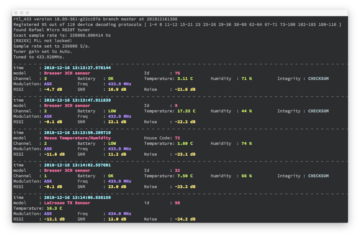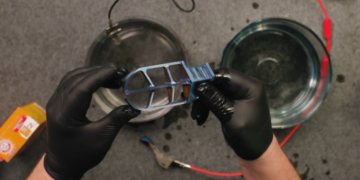
So it turns out that walking around with $4,000 worth of hardware on your head isn’t quite the peak technology experience that some people thought it would be. We’re talking about the recently released Apple Vision Pro headset, which early adopters are lining up in droves to return. Complaints run the gamut from totally foreseeable episodes of motion sickness to neck pain from supporting the heavy headset. Any eyeglass wearer can certainly attest to even lightweight frames and lenses becoming a burden by the end of the day. We can’t imagine what it would be like to wear a headset like that all day. Ergonomic woes aside, some people are feeling buyer’s remorse thanks to a lack of apps that do anything to justify the hefty price tag. The evidence for a wave of returns is mostly gleaned from social media posts, so it has to be taken with a grain of salt. We wouldn’t expect Apple to be too forthcoming with official return figures, though, so the ultimate proof of uptake will probably be how often you spot one in the wild. Apart from a few cities and only for the next few weeks, we suspect sightings will be few and far between.
Whatever happened to the good old trick of spray paint on the lens? That’s one way to defeat a security camera, but perhaps not the most subtle as police deal with waves of WiFi-jammer-assisted burglaries. Thieves employing this technique typically wait for signs a house or business is unoccupied before deploying an easily obtainable jamming device to swamp WiFi signals. With the target network overwhelmed, cameras have a hard time connecting, sending any incriminating images off to the big bit bucket in the sky and allowing them to make off with the goods. WiFi jammers are illegal in the United States, but somehow this fact fails to deter burglars from procuring and using them, so if you’re relying on these cameras to catch a thief, you might want to consider wired cameras.
It seems like Jack Sweeney, the Florida college student who makes flight tracking data on the private jets of the rich and famous easily accessible, has run afoul of yet another billionaire. Previously having cheesed off Elon Musk, he’s now in the crosshairs of (the lawyers of) one Taylor Swift, who really, REALLY doesn’t like it when people know where she is. Her legal team has filed a cease-and-desist order that cites a laundry list of potential harms that could result from Sweeney continuing to provide publicly available ADS-B information to any and all. Given the lengths Ms. Swift goes to be seen and heard as much as possible, trying to keep the location of her jet a secret seems a bit disingenuous, to say the least.
How cool would it be to have a Ph.D. in hardware hacking? If it sounds as great to you as it does to us, you’ll want to check out this scholarship for “Repurposing Microelectronics for Gut Sensing, Delivery, and Sampling Devices.” The notice was sent to us by (Edwin) En-Te Hwu, a professor at the Technical University of Denmark who does some really cool work, including making old DVD players into atomic force microscopes and low-cost nanopositioners. We had him on the Hack Chat to talk about that last one and it was a super-interesting chat. The Ph.D. work sounds even more interesting since it involves developing ingestible devices for monitoring the intestinal tract. Check it out the video below for more coolness.
[embedded content]
And finally, we wandered across a pretty cool YouTube channel that does a fantastic job visualizing the inner workings of helicopters. Through the magic of Blender, [Bzig] shows us how power is transmitted from a pair of gas turbine engines to both the main rotor and the tail rotor, no mean feat given the mechanical constraints and aerodynamic requirements. We’d always assumed that the swash plate mechanism would be the most interesting aspect of helicopter mechanics, but it turns out that the gear train has a lot going for it too. Especially fascinating was the freewheeling gears, which allow a failed engine to be decoupled from the rotor shaft, or both if autorotation is called for. Enjoy!
[embedded content]
- SEO Powered Content & PR Distribution. Get Amplified Today.
- PlatoData.Network Vertical Generative Ai. Empower Yourself. Access Here.
- PlatoAiStream. Web3 Intelligence. Knowledge Amplified. Access Here.
- PlatoESG. Carbon, CleanTech, Energy, Environment, Solar, Waste Management. Access Here.
- PlatoHealth. Biotech and Clinical Trials Intelligence. Access Here.
- Source: https://hackaday.com/2024/02/18/hackaday-links-february-18-2024/
- :has
- :is
- :not
- :where
- $UP
- 000
- 2024
- 800
- a
- About
- accessible
- across
- adopters
- All
- allow
- Allowing
- always
- an
- and
- Another
- any
- anything
- apart
- Apple
- apps
- ARE
- around
- AS
- aside
- aspect
- assumed
- At
- available
- BE
- becoming
- before
- below
- between
- Big
- billionaire
- Bit
- Blender
- both
- burden
- burglars
- business
- but
- by
- called
- camera
- cameras
- CAN
- Catch
- certainly
- Channel
- chat
- check
- Cities
- CNN
- College
- complaints
- Connecting
- Consider
- constraints
- consumer
- Consumer Tech
- content
- continuing
- Cool
- could
- crosshairs
- data
- day
- deal
- decoupled
- delivery
- Denmark
- deploying
- developing
- device
- Devices
- do
- does
- Doesn’t
- DVD
- easily
- Edwin
- Elon
- Elon Musk
- embedded
- employing
- end
- Engine
- Engines
- Episodes
- especially
- Even
- evidence
- expect
- experience
- fact
- Failed
- fails
- famous
- fantastic
- far
- fascinating
- feat
- February
- feeling
- few
- Figures
- filed
- Finally
- flight
- florida
- For
- Force
- foreseeable
- forthcoming
- from
- GAS
- Gear
- gears
- given
- Goes
- going
- good
- goods
- great
- gut health
- hack
- hacking
- had
- happened
- Hard
- Hardware
- harms
- Have
- having
- head
- Headset
- Health
- heard
- heavy
- hefty
- helicopter
- her
- him
- House
- How
- HTML
- HTTPS
- if
- Illegal
- images
- imagine
- in
- Including
- information
- inner
- interesting
- into
- involves
- IT
- jack
- Jets
- Job
- jpg
- Keep
- Know
- Lack
- Last
- Lawyers
- least
- Legal
- legal team
- Lens
- lenses
- lightweight
- like
- lining
- links
- List
- location
- Lot
- magic
- Main
- make
- MAKES
- mean
- mechanical
- mechanics
- mechanism
- Media
- might
- monitoring
- more
- most
- mostly
- motion
- MS
- much
- Musk
- network
- next
- no
- Notice..
- now
- of
- off
- official
- often
- Old
- on
- ONE
- only
- or
- order
- out
- overwhelmed
- Pain
- paint
- pair
- Peak
- People
- perhaps
- phd
- plato
- Plato Data Intelligence
- PlatoData
- players
- Police
- position
- possible
- Posts
- potential
- power
- pretty
- previously
- price
- private
- Pro
- probably
- Professor
- proof
- provide
- publicly
- quite
- really
- recently
- reduction
- released
- relying
- Requirements
- result
- return
- returns
- Rich
- Run
- salt
- say
- Secret
- security
- seems
- seen
- sending
- sent
- she
- Shows
- signals
- Signs
- since
- sky
- So
- Social
- social media
- Social Media Posts
- some
- somehow
- sounds
- Spot
- States
- Student
- Supporting
- Sweeney
- SWIFT
- TAG
- taken
- Talk
- talking
- Target
- team
- tech
- Technical
- technique
- Technology
- thanks
- that
- The
- Them
- These
- this
- though?
- thought
- Through
- time
- to
- too
- TOTALLY
- Tracking
- Train
- trick
- trying
- turbine
- turns
- typically
- ultimate
- United
- United States
- university
- uptake
- us
- using
- Video
- vision
- wait
- walking
- want
- was
- Wave
- Way..
- we
- wear
- Weeks
- What
- when
- which
- WHO
- wifi
- Wild
- will
- with
- Work
- workings
- worth
- would
- yet
- you
- Your
- youtube
- zephyrnet












